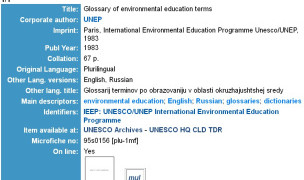 41 Terms
41 TermsHome > Terms > English, UK (UE) > Battle of Thebes
Battle of Thebes
The Battle of Thebes was a battle between the Greek city state of Thebes and Alexander III of Macedon (Alexander the Great) in 335 BC immediately outside of and in the city proper.
The Great King Darius III started to distribute money to the Greek city states with the hope that they would rise against Alexander. In addition to this, he had sent his most able general Memnon of Rhodes against the Macedonian troops that were already stationed in Ionia at this time.
Furthermore news of Alexander had not reached the southern Greek city states in some time. He had been busy with the siege of Pelium and news had reached them that he had died during the course of this siege. Demosthenes - a prominent Athenian politician - produced a man who claimed to have been present at the siege and claimed that Alexander was dead. Alexander had indeed, been injured during the course of this siege, so it was not a totally implausible claim to make. Learning of the alleged death of Alexander, Theban exiles in Athens raced off to their hometown and sought to incite a revolt from Macedonian rule there. The Cadmaea, the citadel that was situated upon a hill in Thebes, was occupied by a Macedonian garrison, and it was this place that the Thebans sought to attack. To this effect, they killed two Macedonian officers who had been roaming the city, and declared their independence from Macedonia.
Alexander therefore marched south, hitting Thessaly by the seventh day and Boeotia by end of the next week. Having marched over three hundred miles in two weeks, the Thebans were shocked to see him in such close proximity to them, and did not believe that it was in fact Alexander at all, contesting that it was Antipater. He had passed through the pass of Thermopylae without any of the city states knowing about it.
After three days of preparation, the general assault that was about to take place against the city. When things were finally ready, Alexander divided his force into three parts. The first part of the force he ordered to attack the palisades that were around the city itself. The second to form in line of battle and face the Theban infantry. The third part being a reserve, that was to plug up any holes and to press up any advantages that the Macedonians gained in the course of the siege.
The Thebans planned the following: They emancipated their slaves and faced them towards that part of the Macedonian force which drove towards the wall itself. The Theban cavalry was placed within the palisades themselves. The Thebans made everything ready to fight to the last man, and put their women and children in the city temples. They were aware that there was to be no quarter.
The Thebans fought desperately, fearing for their homes, wives and children. The battle went on for some time, and it was in doubt. However, Alexander sent in his reserves and the situation started to improve. Despite the Theban's valiant struggle, however, Alexander noticed that a unit of their guard had abandoned one of the gates. It is here that he sent Perdiccas troops to enter and penetrate into the city itself. At this point, realising that the fight for the city walls was a lost cause, the Thebans retreated and began their final battle within the city itself. It was around this time that Philotas and his garrison broke out of the citadel and began fighting in the battle as well.
As a result, the city of Thebes was burnt to the ground, because they had been unwilling to surrender to the Macedonians. 6,000 people had perished in the course of the battle, and 30,000 were taken and sold into captivity. This salutory example served as a reminder for the rest of the Greek City states, and so severe was the lesson that never again was there to be a major problem with any city that was in the League of Corinth.
- Part of Speech: proper noun
- Synonym(s):
- Blossary:
- Industry/Domain: History
- Category: Ancient Greece; Ancient history
- Company:
- Product:
- Acronym-Abbreviation:
Other Languages:
Member comments
Terms in the News
Featured Terms
phylum placozoa
Macroscopic, flattened marine animals, composed of ventral and dorsal epithelial layers enclosing ...
phylum cnidaria
Cnidarians. Hydras, hydroids, jellyfish, sea anemones, and corals. Free-swimming or sessile, with ...
share a term with millions
Share a term with millions of users around the world and increase your online visibility.Share a ...
oak
Genus native to the Northern Hemisphere with spirally arranged leaves, catkins for flowers and ...
Everest
The last but not least mount Everest. The Earth's highest mountain, with a peak at 8,848 metres ...
aglaonema
Genus of about 20 species of usually rhizomatous, evergreen perennials from tropical forest in Asia. ...
Robojelly
Robojelly is a hydrogen-powered robot desgined in the United States that moves through the water ...
Ferdinand Porsche
Ferdinand Porsche (3 September 1875 – 30 January 1951) was an Austrian-German automotive engineer ...
Marzieh Afkham
Marzieh Afkham, who is the country’s first foreign ministry spokeswoman, will head a mission in east ...
define1
Share a term with millions of users around the world and increase your online visibility.Share a ...
Contributor
Featured blossaries
zblagojevic
0
Terms
5
Blossaries
2
Followers
Glossary of environmental education
 41 Terms
41 Terms
architected
0
Terms
27
Blossaries
14
Followers
The North Face 2015 Collection
 20 Terms
20 TermsBrowers Terms By Category
- World history(1480)
- Israeli history(1427)
- American history(1149)
- Medieval(467)
- Nazi Germany(442)
- Egyptian history(242)
History(6037) Terms
- Hats & caps(21)
- Scarves(8)
- Gloves & mittens(8)
- Hair accessories(6)
Fashion accessories(43) Terms
- General seafood(50)
- Shellfish(1)
Seafood(51) Terms
- Zoological terms(611)
- Animal verbs(25)
Zoology(636) Terms
- Plastic injection molding(392)
- Industrial manufacturing(279)
- Paper production(220)
- Fiberglass(171)
- Contract manufacturing(108)
- Glass(45)




